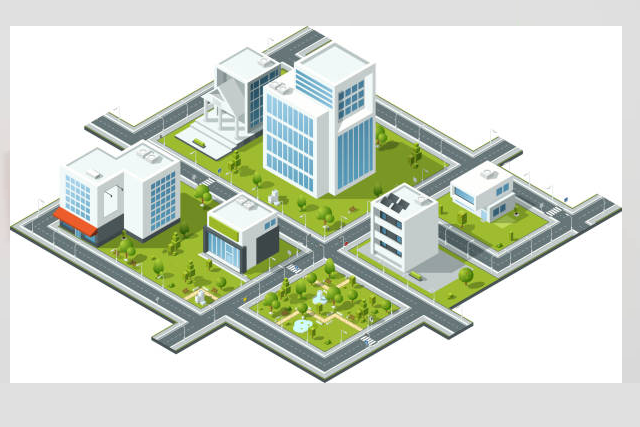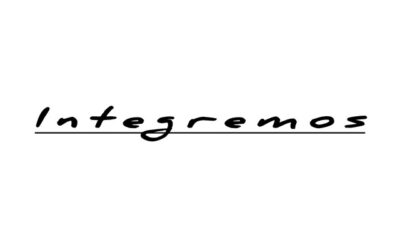Have you ever heard about BIM in the construction field? Building information modelling is an essential process for each building around the globe. It aims to make sure that the planning, designing and construction of a building are efficient and concerted.
The value of construction models; however, there are some BMI factors that every industrial person should know. If you are curious to know what it is and how you can use it, then read our detailed guide. So, keep reading our article till the end to know about its worth in the construction industry.
Table of Contents:
What is the Building Information Modelling (BIM)?

First, you must know what is a building information modelling. Let’s explore BMI and its impact in the construction field. It is a process of creating and managing information on the construction project until its completion. Using this model, the constructors can develop the digital description of each built asset. This description contains 3D models of information, product and handover information.
It is the most famous process that helps architects and contractors plan, design and build a project using one 3D model. Not only these, developers, engineers and manufacturers can also use this model.
BIM is also helpful for operating and managing buildings using easy-to-access data. Using this data, the government and managers can make the right decision. For this, they can use the information from the model even after construction.
What are the Benefits of BIM?

Construction experts guide people about the importance of using different building information models. Further, we will get to know about the top of the list and major business advantages of using the building information model before constructing any site:
Cost-efficiency:
BIM is very helpful in providing technical information. So, contractors can easily calculate each cost of the project during the designing stage using calculation software. This way, stakeholders can make essential repetitions. Not only this, but they can also use many other options without wasting time, money and effort.
Speed:
The best point of BIM is that it can exchange information efficiently. Besides, it is efficient enough for quick repetitions of structure and architecture.
Centralized information:
Building information modelling can capture each phase of the building process. This way, it can centralize each piece of information in one 3D model. So contractors can easily find and follow every phase of the process.
Precise calculations:
Using BIM, contractors can get detailed information. This way, the model can make complex processes easier and more reliable. These may be ventilation, heating and plumbing systems. BIM is also helpful in calculating energy using linear and 3-D information.
Lower carbon emissions:
When there is a precise calculation, then it is easy for architects and engineers to get the right calculation of the required items. This way, they don’t need to waste time, money and effort.
Accurate cost estimates:
Building modelling information is helpful for the integration of cost and scheduling data. This way, it can help to make reliable cost estimations.
What are Building information modelling (BIM) Levels?
Many levels of BIM are present that are useful for many constructions. Each level is the representation of various criteria and maturity levels. The first level of BIM is 0, and it ends up with 5D and even 6D.
The levels aim to find the information being shared throughout the whole process. So, let’s explore each level of the building information model in detail. Then the contractors will know how these levels are helpful.
Level 0 BIM: Paper-based drawings + zero collaboration
It is the representation of a non-collaborative operation. Suppose the contractors use 2D CAD and work with drawings. Then it is level 0 BIM. Now, many industries are working above this level. The reason is that each expert in the industry is not trained enough. Besides, the construction doesn’t include using BIM in contract specifications.
Level 1 BIM: 2D construction drawings + some 3D modelling
When the contractors use 2D CAD to make a draft of information and documentation and use 3D CAD for concept work, then it is level 1 BIM. This level allows the management of CAD according to the BS standards. Besides, this level also allows sharing of data from common data. Most industries are using this level. This level doesn’t allow much cooperation. So, each stakeholder manages their own data.
Level 2 BIM: Construction Teams use their own 3D models
In 2016, level 2 BIM was important for all constructions in the UK. Then in 2017, France made this level mandatory for each construction project. Level 2 allows contractors to use 3D CAD. Though, stakeholders use different ways of information exchange. That is the reason why it is different from other levels.
Level 3 BIM: Construction Teams use shared 3D model
Level 3 BIM is more collaborative than others. This level is not like level 2, in which the contractor uses 3D CAD. At the same time, this level allows contractors to use a single project model. This level has a centralized model, which is accessible to everyone. No doubt, this level is called open BIM. It means another level of protection against clashes. It is also helpful to add value to each step of the project.
Levels 4, 5, & 6 BIM: Evaluating the cost & sustainability information
Level 4 of the Building information model adds another element to the informational model. The information is related to the data schedules. This way, contractors can know the duration each step of the project takes.
Level 5 of BIM adds price estimation, budget checking and tracking to the informational model. At this level, contractors can check the cost which is needed for the project.
Level 6 BIM can help to calculate the energy use for a building before construction. It ensures that the engineers can consider more than the upfront price. Besides, it also makes sure the right prediction of energy use. Not only this, but it also allows stakeholders to construct energy-efficient structures.
The Future of BIM in Construction Industries:
Though BIM has many clear advantages, it is good to see its future in the construction industry. The goals of BIM are clear and useful for those who go through these levels. No doubt, in future, the construction industry will be more collaborative and digital. With time, BIM is becoming famous day by day. So, 4D, 5D and 6D will be part of the construction projects in the near future.
Moreover, there are more efforts to decrease waste in projects worldwide. Most of this waste includes clashes, inefficiencies and reworking. When contractors work in the building information modelling collaboratively, then the future will be better than today.
How is BIM Transforming Construction Industry?
Now, the building information model approach is changing the way for designing, building and managing various building constructions. The advantages of BIM are unlimited, which enables streamlined operations and a lower budget.
Almost 75% of industries that are using BIM report positive outcomes. These industries use BIM for building projects, with less paperwork and reduced price. No doubt, there will be many countries using this model for construction projects:
- 74% of UK companies use this model, and it is vital for governmental construction.
- It is the vital model for construction in Singapore, South Korea and Finland.
- 72% of German companies use this model, and it is vital for construction over €100 M.
- 50% of French companies use this model, and it is vital for construction in 2022.
Conclusion:
Though BIM is a helpful asset for on-site and off-site building constructions, there are a few challenges that need to be considered professionally.
The use of a building information modelling is very helpful for on-site construction. It allows stakeholders to control the designing phase completely. But with time and progress, things become hard. With more people joining the project, there are many things that the constructors need to plan!
Read Also: Residential VS commercial – Where to Invest?







My degree of admiration for your work is a reflection of my own enthusiasm for it. Your sketch is visually appealing, and your composed material is both interesting and informative. Despite this, you are apparently concerned about moving in a direction that may induce anxiety. I agree that you will be able to deal with the situation quickly and effectively.